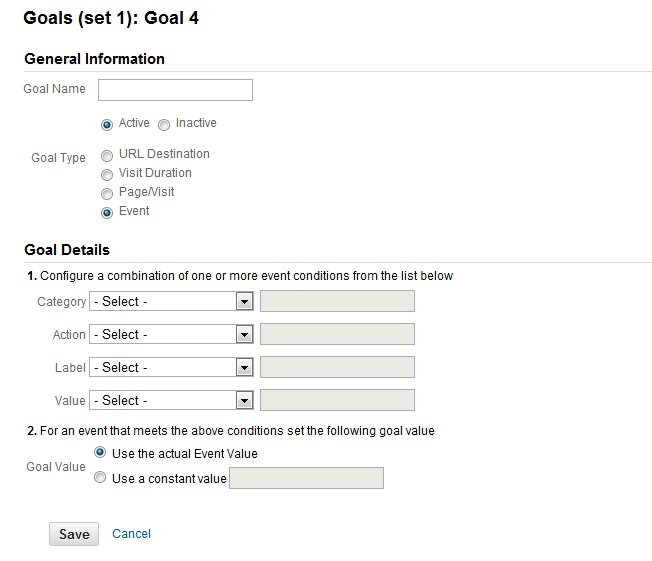Discover the Limitations of Google Analytics Goals: Introducing the Information Types That Remain Untrackable
As companies progressively count on data-driven decision-making, understanding the constraints of devices like Google Analytics comes to be critical. While Google Analytics Goals offer useful understandings right into individual interactions, there exist information kinds that avoid monitoring, posing difficulties to a comprehensive understanding of customer habits.
Insufficient User Journey Tracking
Insufficient individual journey tracking within Google Analytics can prevent the capability to precisely examine customer habits. When the customer trip is not totally tracked, there are spaces in the information that protect against a thorough understanding of how individuals connect with a site. This lack of insight can result in missed out on opportunities for optimization and enhancements to the individual experience.
One common problem with insufficient customer trip tracking is the inability to see the complete course that customers take in the past completing a goal or leaving the website. Without this information, it is testing to identify where users might be experiencing barriers or friction points that stop them from transforming. Furthermore, incomplete monitoring can cover the impact of certain advertising and marketing initiatives or web site modifications on individual habits.
To address this constraint, it is important to set up proper monitoring systems within Google Analytics to catch the entire user journey. This might include establishing occasion tracking, objective funnels, or using tools like Google Tag Supervisor to guarantee that no important communications go unrecorded. By acquiring an extensive sight of the individual journey, internet site owners can make more enlightened decisions to enhance customer engagement and drive conversions.
Acknowledgment Difficulties
Navigating through acknowledgment obstacles in Google Analytics needs a comprehensive understanding of just how different touchpoints contribute to the general conversion process. Attribution challenges emerge from the complexity of contemporary customer trips, where individuals interact with multiple channels prior to transforming.
One usual attribution challenge is the difficulty in connecting conversions to the appropriate resource, specifically in cases where individuals interact with several networks before converting. In addition, cross-device tracking poses an additional attribution obstacle, as individuals commonly change between gadgets during their trip, making it testing to track their interactions flawlessly.
Offline Conversions
Provided the obstacles connected with connecting conversions accurately in online networks, the measurement of offline conversions provides a substantial opportunity for marketers looking for an extra detailed understanding of their customers' journey. Offline conversions describe actions that clients absorb the real world, such as making purchases in brick-and-mortar shops or over the phone, attending occasions, or involving with printed materials - what data is google analytics goals unable to track. These conversions are critical for companies that operate both online and offline, as they supply valuable insights into the effectiveness of marketing campaigns throughout various touchpoints
Tracking offline conversions generally postured a considerable obstacle for website link marketing experts, as it was testing to connect these actions back to certain online communications accurately. With developments in innovation, such as the combination of CRM systems, special identifiers, and promo code codes, businesses can now bridge the gap in between online and offline information to obtain a much more alternative view of customer behavior. By properly gauging offline conversions, online marketers can enhance their techniques, assign sources much more effectively, and ultimately enhance the overall consumer experience.
Cross-Device Tracking
Cross-device monitoring plays a vital function in understanding the interconnected nature of customers' electronic interactions across numerous gadgets. In today's omnichannel globe, where individuals perfectly switch between smartphones, desktop computers, and tablet computers, tracking their actions throughout these gadgets is necessary for marketing professionals to get a comprehensive sight of their customer journey.

Additionally, privacy issues and laws such as GDPR and CCPA have even more challenging cross-device monitoring. With users requiring even more control over their information and enhanced limitations on tracking innovations, marketers should find privacy-compliant and cutting-edge ways to connect user interactions across devices.
Dynamic Content Engagement
Comprehending user interaction with dynamic content is essential in optimizing digital Homepage marketing techniques for enhanced audience communication. Dynamic web content describes internet site components that transform based upon individual behavior, choices, or various other aspects, using a personalized experience. However, tracking customer communications with dynamic material positions difficulties for standard analytics tools like Google Analytics.
While Google Analytics can track basic interactions like clicks important source and page views, it might struggle to record more nuanced engagements within dynamic web content. what data is google analytics goals unable to track. Metrics such as time spent on particular vibrant aspects, float activities, or interactions within pop-ups are usually not easily measurable making use of conventional tracking methods. This constraint impedes online marketers' ability to completely grasp exactly how users are involving with vibrant web content and customize their methods accordingly

Verdict
In final thought, Google Analytics goals have limitations in tracking insufficient individual trips, associating conversions accurately, recording offline conversions, tracking cross-device communications, and determining vibrant web content involvement. These constraints highlight the importance of discovering extra tracking techniques and devices to get an extra thorough understanding of user behavior and conversions beyond what Google Analytics can provide.
While Google Analytics Goals offer important insights into user interactions, there exist information types that avoid tracking, posturing obstacles to an extensive understanding of user behavior.Insufficient customer trip monitoring within Google Analytics can impede the capability to accurately analyze user behavior. When the user journey is not fully tracked, there are gaps in the data that stop a thorough understanding of just how customers interact with a web site.One typical concern with insufficient user journey monitoring is the inability to see the complete path that individuals take before completing a goal or leaving the website. By obtaining a comprehensive sight of the user journey, site proprietors can make more educated choices to boost user interaction and drive conversions.